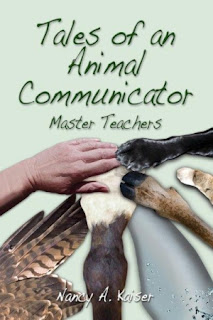Today we welcome Camille Matthews, author of the
Quncy the Horse books, as she tours with
Walker Author Tours with
Quincy Moves to the Desert. In this guest post, she talks about creating the beautiful illustrations for these wonderful children's books with her illustrator, Michelle Black.
Our Experience with Illustrations and Design:
The Backstory of the Quincy the Horse Books
by Camille Matthews
A guiding mission in designing the Quincy the Horse Books
has been our desire to bring Quincy and his experience to life in a way that
would allow children not only read the stories but to have an in depth
experience of Quincy’s world. An important aspect of the stories is that they
allow the child not only to follow Quincy’s adventures but to get to know him
on a personal level in more depth than might be usual in a children’s picture
book. I guess you could say that we envisioned the Quincy the Horse Books as
educational in the broadest sense. Quincy gets out in the world and does
things, even when he is not sure he likes it! He learns new things, meets new
friends, acquires new skills and sees new places. This is the theme that
propels the stories.
In keeping with the creation of in depth experience and
expanded horizons, we chose a style for the illustrations that is realistic but
at the same time rich with color, detail and authenticity. The illustrations
are from full sized oil paintings that alternate soothing still life images,
depictions of Quincy’s emotions, and complex, dramatic paintings of action and
landscapes. Children who have grown up in the East see the picture of Quincy
roping a calf and expand their horizons about what happens in rodeos. Children
who live in New Mexico have a chance to learn about the green forests and high
piled snows of Upstate New York.
 As with the realization of any creative vision, this process
was not without its ups and downs! Here are some anecdotes from our creative
process that give a window into the challenges we faced. The first episode came
about two months into our initial collaboration when we were going through the
manuscript for the first book, the other during book two.
As with the realization of any creative vision, this process
was not without its ups and downs! Here are some anecdotes from our creative
process that give a window into the challenges we faced. The first episode came
about two months into our initial collaboration when we were going through the
manuscript for the first book, the other during book two.
When we began with Quincy
Finds a New Home, my illustrator, Michelle Black, and I discussed where
each illustration would be placed in the text and what would be pictured in the
illustration. It was a Sunday and we were sitting at my kitchen table with the
manuscript spread out page by page. Michelle said, almost as an aside, that she
would need actual photographs from which to work. I was shocked as I assumed
all she would need was a verbal description of what would be in the picture. Luckily
I am a fair amateur photographer and the characters and scenes were actually
real so this was possible. I ended up enjoying this role because it made me
more engaged in the illustration process. Through this exercise I also learned
the importance of the pictures actually fitting the words.
 The next example was actually a huge breakthrough involving
the second book, Quincy Moves to the
Desert. Many authors describe an experience where a character has a mind of
his/her own and takes over the story. In the second book, this happened with
the illustrations. Originally the illustrations of the jobs horses have in
different places, Amish draft horses, Thoroughbreds racing and the little boy
on his calf roping horse, were going to be simple depictions of those
activities. We had a photo of two black draft horses pulling a colorful hay mower
slated for the Amish scene but the background did not work and Michelle decided
the photo was not one she could use. I went to a draft horse driving
competition in Southern Colorado to get some additional photos where I took
pictures of a three horse team. The next morning I was sitting at the computer
reviewing the digital images when I realized that the team of red draft horses
included a horse that was much smaller and had a white blaze just like Quincy.
This lead me to the idea of Quincy not just learning about draft horses but
actually imagining himself as a draft horse. This took the story to a whole new
level of imagination which is so central to the child’s way of exploring the
world and learning new things and added more action to the journey in the horse
van. We then found pictures of red horses winning a race and roping a calf to
carry this through the book.
The next example was actually a huge breakthrough involving
the second book, Quincy Moves to the
Desert. Many authors describe an experience where a character has a mind of
his/her own and takes over the story. In the second book, this happened with
the illustrations. Originally the illustrations of the jobs horses have in
different places, Amish draft horses, Thoroughbreds racing and the little boy
on his calf roping horse, were going to be simple depictions of those
activities. We had a photo of two black draft horses pulling a colorful hay mower
slated for the Amish scene but the background did not work and Michelle decided
the photo was not one she could use. I went to a draft horse driving
competition in Southern Colorado to get some additional photos where I took
pictures of a three horse team. The next morning I was sitting at the computer
reviewing the digital images when I realized that the team of red draft horses
included a horse that was much smaller and had a white blaze just like Quincy.
This lead me to the idea of Quincy not just learning about draft horses but
actually imagining himself as a draft horse. This took the story to a whole new
level of imagination which is so central to the child’s way of exploring the
world and learning new things and added more action to the journey in the horse
van. We then found pictures of red horses winning a race and roping a calf to
carry this through the book.

--
Thank you to Camille for stopping by and sharing this very interesting insight into the books!
 Today we have a guest post by Bob O'Connor, who is currently touring with Walker Author Tours to promote his novel A House Divided Against Itself. Enjoy, and be sure to check out his book.
Today we have a guest post by Bob O'Connor, who is currently touring with Walker Author Tours to promote his novel A House Divided Against Itself. Enjoy, and be sure to check out his book.


















